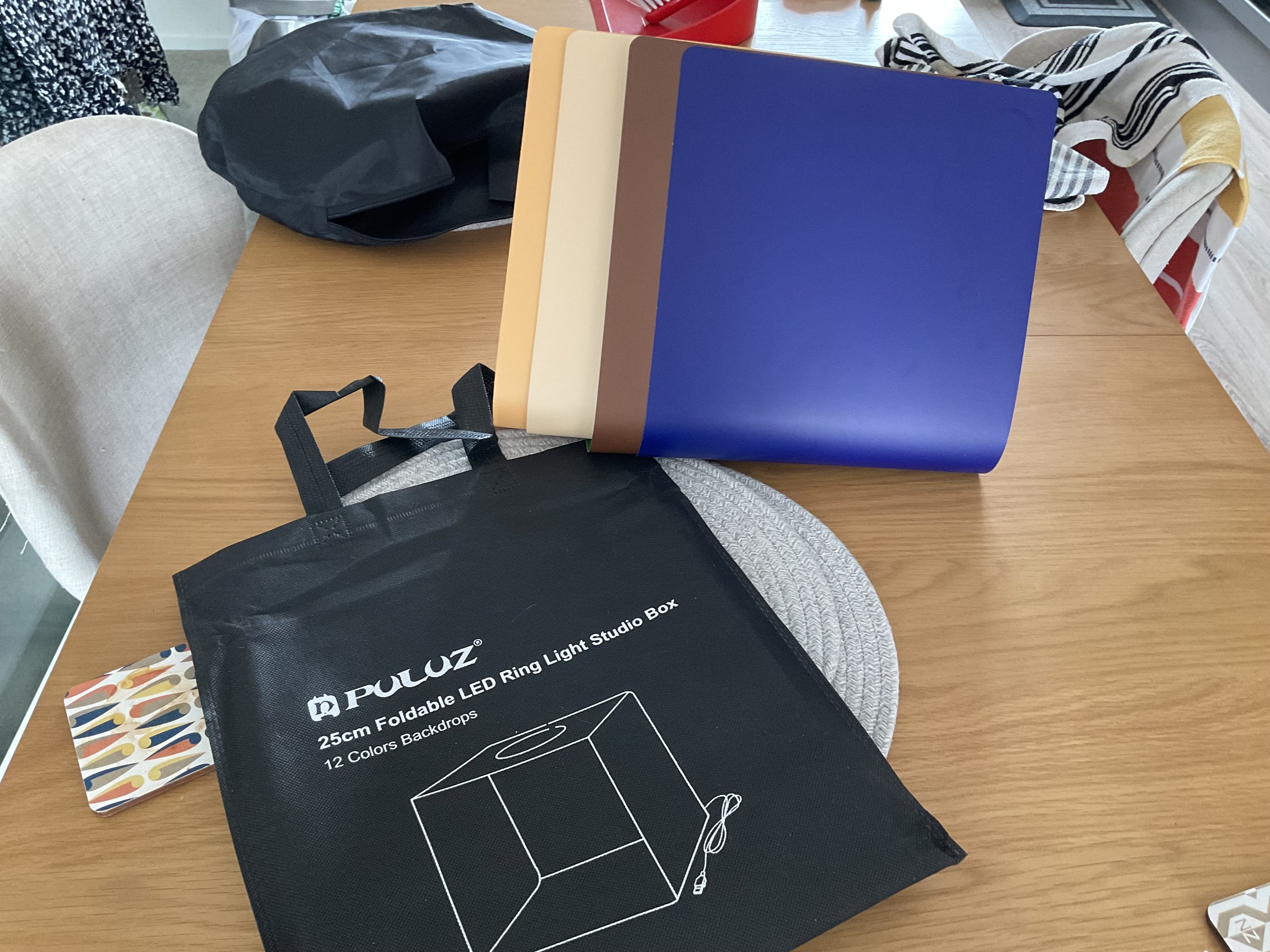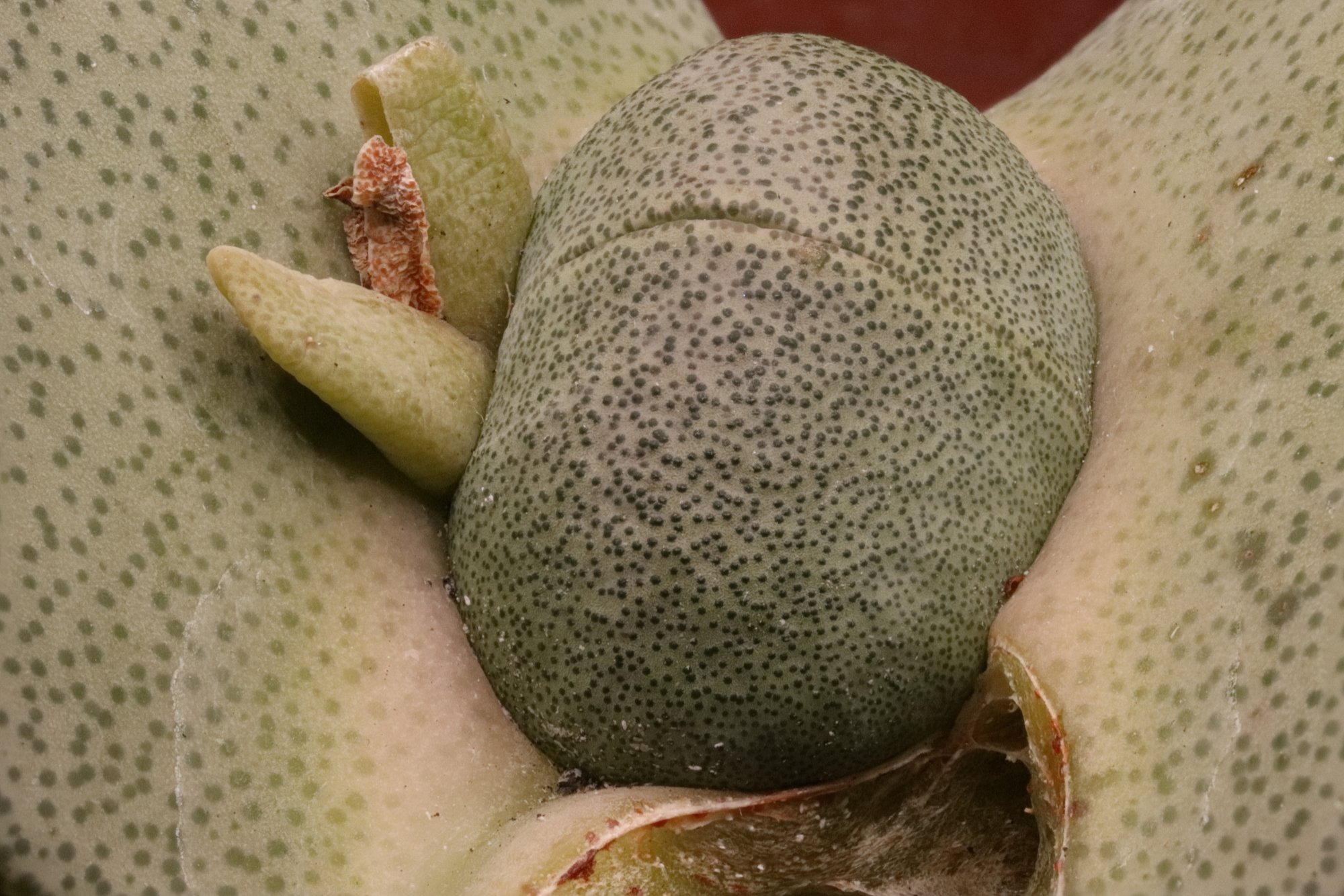Lithops succulent, light studio box in a leaf.
The compact Puluz Light Studio Box is useful for rapid set up, macrophotography sessions.
I’m not a photographer but I take heaps of photos.
I like pics that illustrate aspects of science. The world famous in Te Henga pillow lavas and the internal workings of Mount Taranaki are recent projects which started with picture stories about rocks.
Rocks have a story and plants have a life cycle. I came to love plants quite late in life. Macrophotography is a useful tool for illustrating the hidden wonders of plant botany.
Sometimes the pictures I take are pleasing but it’s the underlying science I am interested in. When i want to look at beautiful plant/nature pics I go to Instagram/threads. People love sharing their works of art and it is quite overwhelming.
My photography equipment is relatively basic, a Canon EOS 800D is entry level and fine for my work.
The Canon EF-S 60mm 1:2.8 USM macro lense is fine for my work..
I take focus stacked shots using Helicon Remote, merged on Affinity Photo 2.
I’m not a photographer. I use trial and error till i get light conditions that work for a particular flower, cactus, succulent, orchid or anything else that grabs my attention.
On a whim I bought a Puluz 25cm Foldable LED Ring light Studio Box with 12 Colours backdrops.
It’s incredibly easy to set up and I’m very happy with the pics I took of Lithops (crudely dissected) and Pleiospilos succulents. The plant hasn’t died after dissection, I’m interested in what happens next.
Both plants fitted in the Puluz light box studio perfectly. It’s a great wee tool for rough and ready macro work. As always happens I wish I had bought the next size up, being a tight Scotsman has a downside.
Lithops and Pleiospilos succulents have a fascinating leaf structure but the details are another story.
Top Shot.
Front shot.
Everything packs away neatly in a light bag.
12 Coloured Backdrops.
I never know which colour works best with plants so i usually go with white or black. I’m not a photographer with a natural eye for aesthetics. When i want beauty I head for Instagram/threads.
Lithops, a light studio box in a leaf.
Lithops leaf surfaces are coated in translucent cells that allow light into the leaf interior. Light is reflected off water storage cells that make up most of the leaf volume. Light bounces around internally and measured light intensity within the leaf is greater than outside. Light reflects around the Puluz for good light intensity during sessions
I dissected this Lithops plant a while ago to have a look inside. I grabbed the slightly dried out remains to test the Puluz. Much to my surprise the plant had not died after hacking it to pieces during a clumsy dissection. (I’m not a photographer or a botanist).
The exposed surfaces have dried out leaving a protective layer. I’m interested to see what happens next. Brutal treatment to a harmless plant.
Outlines of the large water storage cells are quite clear. The cells containing chlorophyll for photosynthesis are round the outside; that is another story.
This plant is a bit soft and needs a drink.
Pump up the volume.
My Pleiospilos plant pumped up, presumably as a result of over-watering, till it popped open revealing some internal structure.
The Puluz light display is fine for reasonable macro shots. The flower in the centre beside current leaf growth appears stunted.
I’ll follow this to see what happens next.
Apparently the plant normally dies when it splits open.
Lithops leaf, freshly dissected.
Green chlorophyllous cells round the outside. Water balloon shaped cells in the centre, filled with water. Succulents excel at water storage.











